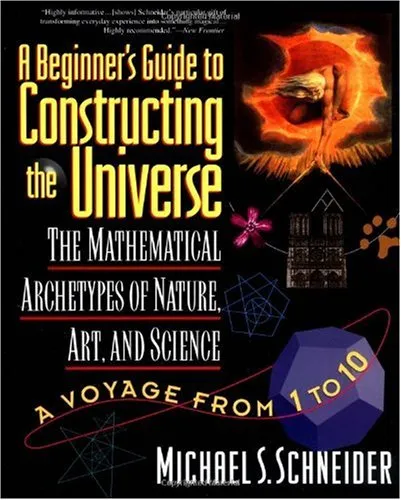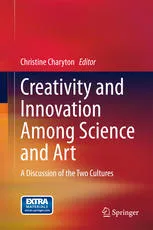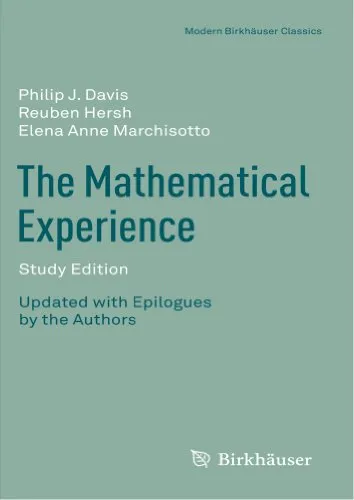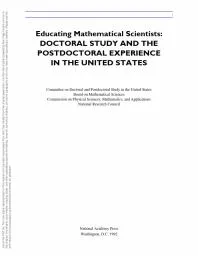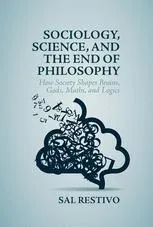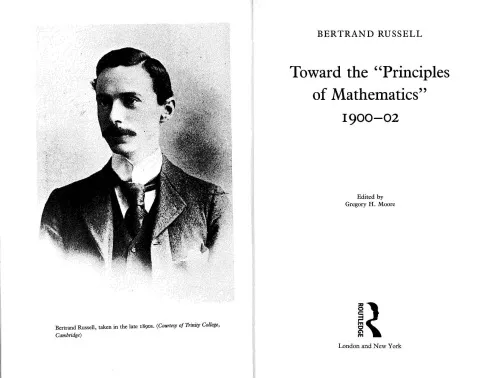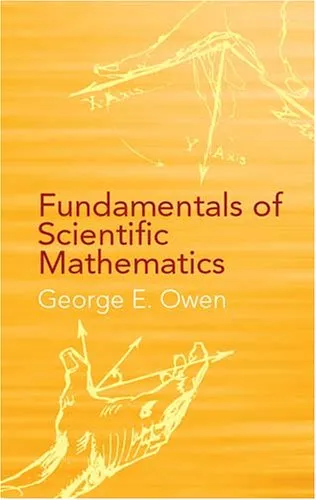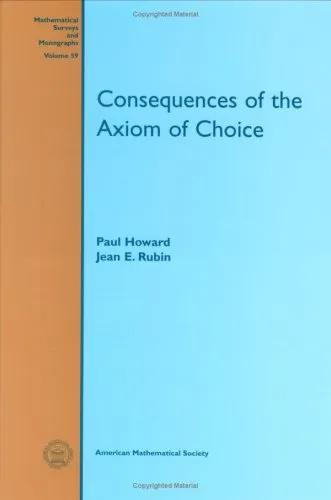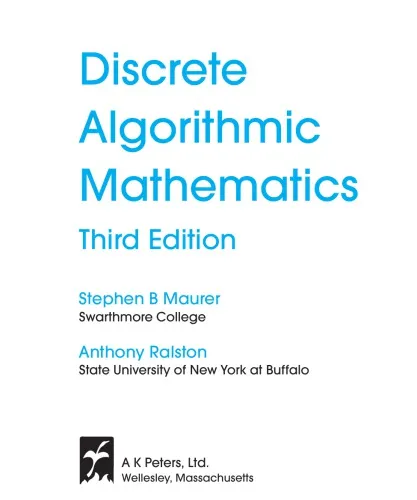A Beginner's Guide to Constructing the Universe: Mathematical Archetypes of Nature, Art, and Science
4.7
Reviews from our users

You Can Ask your questions from this book's AI after Login
Each download or ask from book AI costs 2 points. To earn more free points, please visit the Points Guide Page and complete some valuable actions.Related Refrences:
Introduction to "A Beginner's Guide to Constructing the Universe"
"A Beginner's Guide to Constructing the Universe: Mathematical Archetypes of Nature, Art, and Science" by Michael S. Schneider is a groundbreaking exploration of the profound patterns and numbers that underpin our universe. The book takes readers on a remarkable journey through the mathematics of nature, revealing the elegant and awe-inspiring archetypes that shape everything from the tiniest elements of existence to the grandest structures in art and science. Through this work, Schneider provides an accessible and illuminating guide to understanding the language of the universe in its most fundamental form: mathematics.
Far from being a dry treatise on numbers or an academic textbook, this book masterfully blends philosophy, science, history, and art to present mathematics as a universal force that penetrates every aspect of the natural world. With captivating prose and simple yet profound explanations, Schneider proves that the principles of mathematics are not merely abstract constructs but are instead deeply embedded in the fabric of reality. Whether you are an artist, a scientist, or simply a curious mind, this book will inspire a deeper appreciation of the world around you and the unseen connections that bind it together.
Detailed Summary
The book is divided into ten chapters, each delving into specific mathematical archetypes represented by the numbers 1 through 10. Every chapter explores one of these archetypes as a key to comprehending natural phenomena, human creativity, and the structure of the cosmos. Schneider employs a multidisciplinary approach by weaving together observations from nature, examples from art, insights from ancient cultures, and principles of modern science.
For example, the number 1 represents unity and the origin of all things, while the number 2 signifies duality and balance, as seen in complementary forces such as day and night or male and female. The number 3, tied to creativity and growth, is beautifully illustrated by the triangle and its symbolic resonance in various traditions. Pattern by pattern, Schneider builds an intricate yet easily comprehensible framework that links these archetypes to the geometry of snowflakes, the spirals of seashells, the proportions of classical architecture, and even popular works of art.
Another key highlight of the book is its visual and tactile nature. Schneider includes clear diagrams and geometrical constructions that readers are encouraged to replicate themselves, enabling a hands-on understanding of mathematical principles. Through these illustrations and practical exercises, the book fosters a sense of wonder and discovery, showing that mathematics is not confined to equations and abstractions but is instead a living, breathing language of the universe.
Key Takeaways
- Mathematics is a universal language that reveals hidden connections between nature, art, and science.
- Numbers and geometric shapes represent archetypes, each carrying profound symbolic and practical meanings.
- Understanding these archetypes can enhance our perception of the natural world and inspire creativity across multiple fields.
- Hands-on exploration of mathematical concepts, such as drawing geometric forms, deepens our appreciation of their real-world applications.
- Far from being a purely human invention, mathematics is embedded in the very structure of reality itself.
Famous Quotes from the Book
"The secret language of mathematics is not about numbers per se, but about patterns, connections, and relationships."
"The study of mathematics should be the study of the very nature of reality, and not simply a set of rules to follow."
"Numbers are the ancient lighthouses of thought, illuminating the world in ways both practical and profound."
Why This Book Matters
In a world increasingly dominated by technology and scientific advancement, reconnecting with the timeless principles of nature has never been more important. "A Beginner's Guide to Constructing the Universe" serves as a bridge between ancient wisdom and modern understanding, showing how the same mathematical principles that formed the pyramids, the Parthenon, and the works of Leonardo da Vinci continue to inform our understanding of the cosmos.
Moreover, the book goes beyond the constraints of purely academic mathematics to present a universal perspective on how patterns and archetypes shape our lives. By unlocking these principles, readers can develop a richer awareness of their surroundings, gain fresh creative inspiration, and perceive relationships between disciplines that once appeared disconnected.
Ultimately, Schneider’s work is a profound reminder that mathematics is not merely a subject taught in classrooms but a divine language — an eternal, unifying force that offers insights into the deepest mysteries of existence.
Free Direct Download
You Can Download this book after Login
Accessing books through legal platforms and public libraries not only supports the rights of authors and publishers but also contributes to the sustainability of reading culture. Before downloading, please take a moment to consider these options.
Find this book on other platforms:
WorldCat helps you find books in libraries worldwide.
See ratings, reviews, and discussions on Goodreads.
Find and buy rare or used books on AbeBooks.
1375
بازدید4.7
امتیاز0
نظر98%
رضایتReviews:
4.7
Based on 0 users review
Questions & Answers
Ask questions about this book or help others by answering
No questions yet. Be the first to ask!
